And Then There Were None is a french film of genre Drama directed by Peter Collinson released in USA on 24 september 1974 with Charles Aznavour
And Then There Were None (1974)
Ein unbekannter rechnet ab

If you like this film, let us know!
- Infos
- Casting
- Technical infos
- Photos
- Videos
- Film quotes
- Characters
- Music
- Awards
Released in USA 24 september 1974
Length 1h32
Directed by Peter Collinson
OriginFrance
Themes Serial killer films
Rating57%










And Then There Were None (a.k.a. Ten Little Indians) is a 1974 film version of the Agatha Christie mystery novel of the same name.
Two previous films were released in 1945 and 1965, and a videotaped made-for-television version was broadcast in 1959.
This was the second of three versions of Christie's novel to be adapted to the screen by producer Harry Alan Towers; the aforementioned 1965 version, this one made in 1974, and another in 1989.
It follows the script of the 1965 version, right down to calling the Oliver Reed character "Hugh" (a name change made to accommodate Hugh O'Brian in the earlier version) instead of "Phillip," which was character's name in the novel and play.
This particular adaptation is set in an abandoned hotel in the Iranian desert; the film was shot in the Shah Abbas Hotel (now known as the Abbasi Hotel) in Iran during its pre-revolution days. (The 1965 version was set at a snowed-in mountain chalet, and the 1989 one in the African savanna.)
The film is an hour and thirty-eight minutes long, and was the first version of the novel to be filmed in colour.
Some versions of the film feature a pre-credit sequence that shows the guests arriving by plane at an airport in Iran, where they subsequently board a helicopter to be transported to the hotel. This prologue was cut from the U.S. release.
Herbert Lom, who plays Dr. Armstrong here, also starred in the 1989 version as the General.
The film was directed by Peter Collinson.
Synopsis
A group of 10 people, strangers to one another, have all traveled to a hotel located deep in the deserts of Iran. Upon arrival they discover that their host is mysteriously absent. They are accused via a tape recording by the host, U.N. Owen ("unknown"), someone none of them has ever met, of having committed various crimes in the past which went unpunished by the law.Actors

Charles Aznavour
(Michel Raven)

Stéphane Audran
(Ilona Morgan)
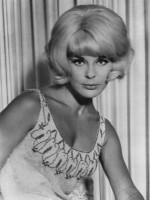
Elke Sommer
(Vera Clyde)

Gert Fröbe
(Wilhelm Blore)

Adolfo Celi
(General André Salvé)
Comments
Leave comment :
Suggestions of similar film to And Then There Were None
There are 323 films with the same actors, 17 films with the same director, 72844 with the same cinematographic genres (including 5 with exactly the same 4 genres than And Then There Were None), 1105 films with the same themes, to have finally 70 suggestions of similar films.If you liked And Then There Were None, you will probably like those similar films :

Open Season (1974)
, 1h46Directed by Peter Collinson
Origin Espagne
Genres Drama, Thriller, Action, Horror
Themes Transport films, Serial killer films, Road movies, Chase films
Actors Peter Fonda, John Phillip Law, Richard Lynch, Frank Braña, Alberto de Mendoza, William Holden
Rating60%





Trois vétérans du Viêt Nam, accusés mais non condamnés pour viol, partent pour deux semaines de vacances. Sur la route, ils kidnappent un couple illégitime, Martin et sa maîtresse Nancy, et les emmènent dans une cabane de chasse, dans un coin reculé des rocheuses. Le couple sera progressivement avili, exposé à une brutalité autant physique que psychologique.

The Spiral Staircase (1975)
, 1h26Directed by Peter Collinson
Origin United-kingdom
Genres Thriller, Horror
Themes Medical-themed films, Serial killer films, Films about disabilities, Personne sourde ou muette
Actors Jacqueline Bisset, Christopher Plummer, Michael Sarrazin, John Phillip Law, Sam Wanamaker, Mildred Dunnock
Rating47%





Helen Mallory is a beautiful young woman who has been unable to speak a word since seeing her husband and daughter die in a fire.
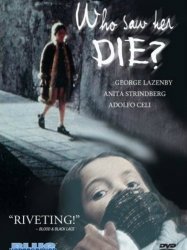
Who Saw Her Die? (1972)
, 1h35Directed by Aldo Lado
Origin Italie
Genres Drama, Thriller, Horror, Crime
Themes Serial killer films
Actors George Lazenby, Anita Strindberg, Adolfo Celi, Dominique Boschero, Peter Chatel, Piero Vida
Rating63%





France, 1968. Dans une station de ski, une petite fille rousse, Nicole, est assassinée à coups de pierre par un individu voilé et vêtu de noir qui enterre ensuite son cadavre dans la neige.

The Butcher (1970)
, 1h33Directed by Claude Chabrol
Origin France
Genres Drama, Thriller, Horror, Crime
Themes Serial killer films, Films about marriage
Actors Stéphane Audran, Jean Yanne, Roger Rudel, Dominique Zardi
Rating72%





Dans le petit village de Trémolat, dans le Périgord, on célèbre le mariage de l'instituteur Léon Hamel avec une jeune femme du village. Parmi les invités de la cérémonie, la jeune collègue de l'enseignant, Hélène David, qui est également la directrice de l'établissement scolaire et Paul Thomas, surnommé « Popaul », le boucher du village.
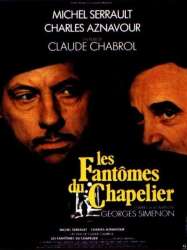
The Hatter's Ghost (1982)
, 2h4Directed by Claude Chabrol
Origin France
Genres Drama, Thriller, Crime
Themes Medical-themed films, Films about sexuality, Erotic films, Films about prostitution, Serial killer films, Films about psychiatry, Erotic thriller films
Actors Michel Serrault, Charles Aznavour, Monique Chaumette, François Cluzet, Isabelle Sadoyan, Aurore Clément
Rating70%





Labbé, a hatter in a French provincial town, leads the life of a respectable citizen but is in fact a serial murderer. The only person to suspect this is his neighbour Kachoudas, an Armenian tailor. After the hatter kills his own wife, he then kills six of her friends to stop them visiting her and prepares to murder a seventh when the intended victim dies naturally. As a substitute, he murders the maid. At the same time, Kachoudas is dying and Labbé confesses his crime to him. Then, after getting drunk he visits his favourite prostitute Berthe and kills her too, being found there in the morning by the police.
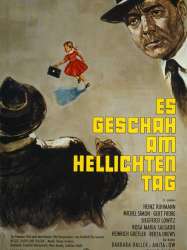 , 1h35
, 1h35Directed by Ladislao Vajda
Origin Suisse
Genres Drama, Thriller, Crime
Themes Serial killer films
Actors Heinz Rühmann, Siegfried Lowitz, Michel Simon, Gert Fröbe, Heinrich Gretler, Berta Drews
Rating77%





The three films follow the same basic plot, where a senior police detective is attached to elucidate the murder of a little girl. As the detective hopes for leads while talking with the mother of the murdered girl, he pledges to find her killer – and so, even after leaving the police force, he embarks upon buying a gasoline shop in the remote area where he hopes to find the criminal, and uses a little girl as bait to attract the killer. His trap is ultimately successful in ensnaring the murderer.

Coup de Torchon (1981)
, 2h4Directed by Bertrand Tavernier, Jean Achache
Origin France
Genres Drama, Comedy, Comedy-drama, Crime
Themes Assassinat, La colonisation française, Films about sexuality, Serial killer films, Histoire de France
Actors Philippe Noiret, Isabelle Huppert, Jean-Pierre Marielle, Stéphane Audran, Eddy Mitchell, Guy Marchand
Rating72%





Lucien Cordier (Philippe Noiret) is an ineffectual local constable with a cheating wife and laughable job. He accepts condescension from his superiors and his wife with good humor, as his antisocial personality allows him to tolerate such abuse. However, he soon realizes that he can use his position to gain vengeance with impunity, and he starts to kill everyone who has regarded him as a fool.
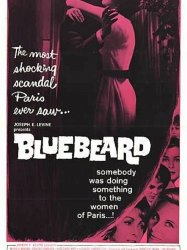
Bluebeard (1963)
, 1h55Directed by Claude Chabrol
Origin France
Genres Drama, Biography, Comedy, Comedy-drama, Historical, Crime
Themes Serial killer films
Actors Charles Denner, Michèle Morgan, Danielle Darrieux, Stéphane Audran, Hildegard Knef, Françoise Lugagne
Rating63%





During World War I, a seemingly respectable middle-aged man Henri Landru has devised an ingenious means of obtaining money to supplement his dwindling income. Adopting various assumed names, he lures middle-class women to his villa at Gambais just outside Paris, where he kills them and burns their bodies. He then helps himself to his victims’ bank accounts so that he can keep his wife, his mistress and his four children in the manner to which they have grown accustomed. Having murdered ten women and one boy, Landru is finally captured and placed before a court of law. Eloquent in his protestations of innocence, he is confident that no jury will condemn a man of such intellect and breeding.
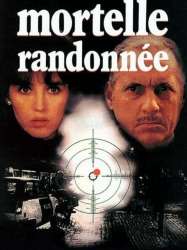
Deadly Circuit (1983)
, 1h35Directed by Claude Miller
Origin France
Genres Drama, Thriller, Action, Crime
Themes Serial killer films
Actors Michel Serrault, Isabelle Adjani, Geneviève Page, Guy Marchand, Macha Méril, Stéphane Audran
Rating68%





The plot revolves around Catherine, a serial killer who seduces men and then murders them throughout countries in Europe. Catherine is trailed by the detective The "Eye" Beauvoir who fantasizes that she is his long-lost daughter and disposes of her trail of corpses to foil the police. Catherine has a real love affair with a blind architect (Sami Frey) but The "Eye" 's jealousy causes the man's death. Catherine returns to her psychotic killing. As the police dragnet closes in, Catherine and The Eye have their final showdown.
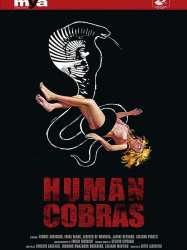
Human Cobras (1971)
, 1h26Directed by Bitto Albertini
Origin Italie
Genres Thriller, Crime
Themes Serial killer films
Actors George Ardisson, Erika Blanc, Alberto de Mendoza, Luciano Pigozzi, Fernando Hilbeck
Rating50%





Tony Garden a fui les États-Unis voici quelques années après avoir contrarié quelques pontes de la mafia. Cependant, il revient à New York pour enquêter sur le meurtre de son frère, Johnny, abattu dans un stade de football par un tireur d’élite armé d’un fusil. Sa femme, Leslie, n'a pas été touchée. De retour en Amérique, Tony s'allie avec elle pour retrouver le tueur. Surveillé par divers personnes, le duo remonte une piste à un certain Mortimer. Mais ce dernier est à son tour égorgé par un mystérieux criminel qui s'attaque aussitôt à Leslie, sauvée in extremis par l'arrivée de Tony. Ce dernier découvre que son frère était impliqué dans une histoire de trafic de drogue avec Mortimer et un autre homme, George McGreves. Le duo décide de le rencontrer au Kenya, à Nairobi, où sont organisés de dangereux safaris.
 Connection
Connection